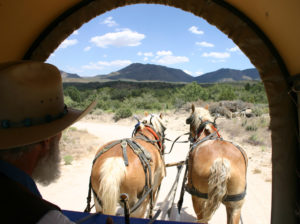
This month brings us to the Sooner State of Oklahoma. The state lies between the Great Plains to the West and the Ozark Plateau to the East and is in the Gulf of Mexico watershed, generally sloping from the high plains of its western boundary to the low wetlands of its southeastern boundary. With small mountain ranges, prairies, mesas and eastern forests, most of the state lies in the Great Plains, Cross Timbers, and the U.S. Interior Highlands, a region prone to severe weather.
Oklahoma is on a confluence of three major American cultural regions and historically served as a route for cattle drives, a destination for southern settlers, and a government-sanctioned territory for Native Americans.
Oklahoma is in a humid, subtropical region. It lies in a transition zone between a humid continental climate to the north, semi-arid climate to the west, and humid subtropical climate in the central, south and eastern portions of the state. Most of the state lies in an area known as Tornado Alley characterized by frequent interactions between cold, dry air from Canada, warm to hot, dry air from Mexico and the southwestern U.S., and warm, moist air from the Gulf of Mexico. The interaction between these three contrasting air currents produces severe weather with a frequency virtually unseen anywhere else on the planet.
Business Climate
Although a major producer of natural gas, oil and agricultural products, Oklahoma relies on an economic base of aviation, energy, telecommunications and biotechnology.
Tulsa is home to the largest airline maintenance base in the world, which serves as the global maintenance and engineering headquarters for American Airlines. In total, aerospace accounts for more than 10% of Oklahoma’s industrial output, and it is one of the top states in aviation engine manufacturing. Because of its position in the center of the United States, Oklahoma is a major contributor to weather-related research.
Other significant industries in this state are based on its low costs and geographical location. The state is the top manufacturer of tires in North America and contains one of the fastest growing biotechnology industries in the nation. Tire manufacturing, meat processing, oil and gas equipment manufacturing, and air conditioner manufacturing are the state’s largest manufacturing industries.
The 27th most agriculturally productive state, Oklahoma is fifth in cattle production and fifth in the production of wheat. Approximately 5.5% of American beef comes from Oklahoma, while the state produces 6.1% of American wheat, 4.2% of American pig products, and 2.2% of dairy products. The state had 85,500 farms in 2012, collectively producing $4.3 billion in animal products and fewer than one billion dollars in crop output with more than $6.1 billion added to the state’s gross domestic product. Poultry and swine are its second and third-largest agricultural industries.
Tax Climate
Oklahoma’s top individual income tax rate is 5%, compared to California’s rate of 13.3%. The state and local tax burden is 8.6%, which ranks 40th in the nation. Corporations are taxed at a rate of 6%, compared to California’s rate of 8.84%.
The state sales tax rate is 4.5%, which ranks 37th in the nation. Additionally, the local sales tax rate is 4.37% to make a combined sales tax rate of 8.87%. This combined rate ranks 6th in the nation.
Other taxes that are of interest to consumers are the gasoline tax and cigarette tax. Oklahoma’s gasoline tax is 17 cents per gallon and ranks 48th in the nation. The state cigarette tax rate per 20-pack is $1.03, which ranks 34th in the nation.
With Oklahoma’s growing economy, it is a popular state for out-of-state businesses to sell their products to in-state customers, but the tax consequences for our technology customers is not entirely clear. Prewritten software that is downloaded electronically is exempt from taxation. Additionally, custom software that is downloaded electronically is not taxable. Software-as-a-Service appears to be taxable, although little guidance has been issued. Analysis of the taxability of SaaS products is performed on a case by case basis. All digital products in Oklahoma are exempt from taxation.
Tax Incentives and Credits
As mentioned above, Oklahoma has some of the lowest tax rates in the nation. In addition, it has some of the best tax incentives in the nation. The state offers companies a low cost of doing business, a low cost of living for employees, and tax rebates that reduce tax burdens even further.
Businesses in Oklahoma may be able to take advantage of several tax credits. Some of these include:
The Oklahoma Quality Jobs Program– The Oklahoma Quality Jobs Program serves as an incentive for companies to expand or relocate jobs to Oklahoma by providing a rebate of a portion of newly created payroll in the state. The program induces the creation of well-paid jobs and promotes economic development. Companies may receive benefits during the first three years of participation while working the required payroll threshold for full qualification.
Oklahoma Community Economic Development Pooled Finance Program– The Oklahoma Community Economic Development Pooled Finance inventive targets business expansion projects which include job creation and significant investment in facilities, machinery, and equipment. With a $200 million capacity, this inventive is comprised of two funding options: Company-Purchased Debt option and a Public Finance Debt option.
For more information on these incentives, click here.
Our team at Miles Consulting Group is always available to discuss the specifics of your situation, whether in Oklahoma or other U.S. States, and help you navigate the complex tax structures arising from multistate operations. Call us to help you achieve the best tax efficiencies.
Random Facts
- More than 25 Native American languages are spoken in Oklahoma, third only to Alaska and California.
- Cimarron County, in Oklahoma’s panhandle, is the only county in the United States that touches four other states: New Mexico, Texas, Colorado and Kansas.
- More than 500 named creeks and rivers make up Oklahoma’s waterways and with 200 lakes created by dams, it holds the nation’s highest number of artificial reservoirs.
- The Oklahoma Tourism and Recreation department regards Cavanal Hill as the world’s tallest hill at 1,999 feet, and fails their definition of a mountain by one foot.
- An average 62 tornadoes strike the state per year- one of the highest rates in the world.



















